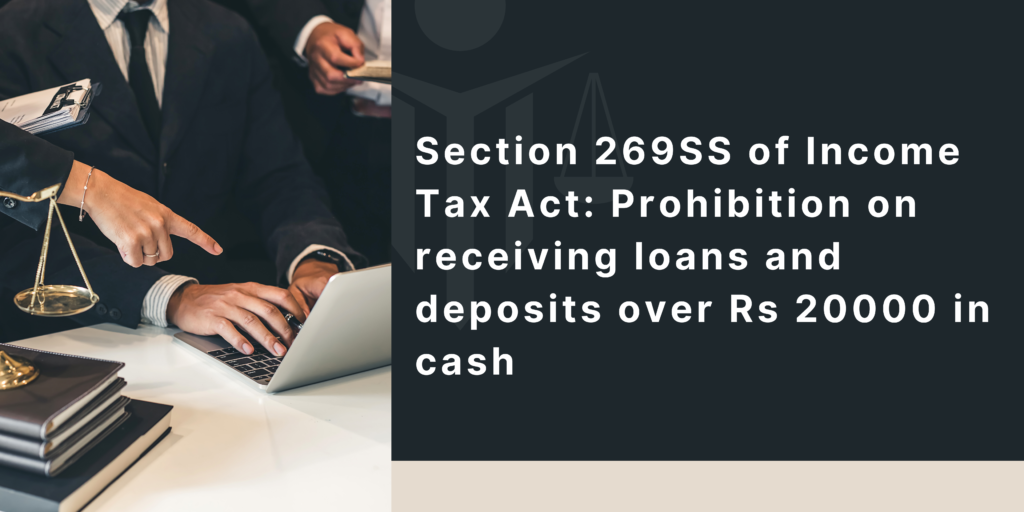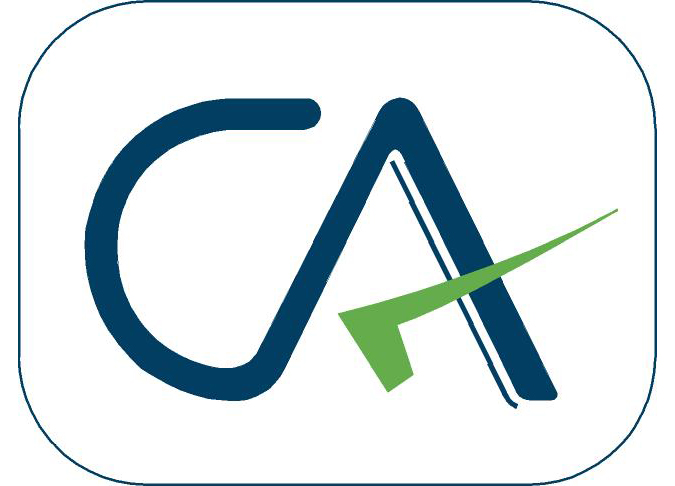
What Is Section 269SS?
A person may only accept a loan, deposit, or other specified sum—hereafter referred to as an advance or otherwise, about the transfer of any immovable property—from another individual by one of the following methods: using an electronic clearing system through a bank account, an account payee cheque or bank draft, or another specified method.
- The loan, deposit, or stipulated amount is at least Rs. 20,000 For instance, Rahul would like to borrow Rs 50,000 from Vineet, but he cannot take it in cash since it exceeds Rs 20,000 and would be under Section 269SS.
- The combined total of the loan, deposit, and the allocated amount exceeds Rs. 20,000. For instance, Rahul requests a 6,000 rupee loan, a 9,000 rupee deposit, and a 7,000 rupee advance from Vineet. Because the total is $22,000, he would not be allowed to accept it in cash.
- If an individual has previously obtained a loan, deposit, or specified amount from the depositor (the person who provided the loan, deposit, or specified sum), and the outstanding loan, deposit, or specified sum exceeds Rs. 20,000, then also he would not be qualified to accept the loan in cash.
- For instance, on June 1, 2020, Rahul received a loan of Rs 19,000 by crossed cheque from Vineet. Rahul wishes to borrow an additional Rs. 2000 from Vineet on April 15, 2021 (the previous loan is still outstanding as of that date). Therefore, the rules of Section 269SS will apply since the total amount of loans outstanding is Rs 21,000 (19,000 + 2,000), which is greater than Rs 20,000. Rahul therefore cannot accept the loan in cash mode.
The Income Tax Sections 269s and 269t
The government has put in place a number of initiatives in recent years to stop the inflow of illicit funds into the economy. Making KYC (Know Your Customer) a requirement for all financial institutions, irrespective of the products they offer, was the most widely supported step in this direction.
But did you know that the Income Tax Act also includes regulations addressing the issue of black money in addition to KYC?
If not, you should review sections 269SS and 269T of the Income Tax Act to ensure that you never make a financial decision that would incur penalties from the Income Tax Department of our nation.
What Transactions are Included In The Income Tax Act’s Sections 269SS And 269T?
Loans: Any sum of money borrowed by one person from another person for whatever purpose, whether with or without interest, security, or paperwork.
Deposits: Any amount of money, with or without a contract or agreement, that one person receives from another for investment, safekeeping, or earning interest.
Advances: Any amount of money, with or without interest, security, or paperwork, that is given from one party to another as part of a contract or agreement for the sale, purchase, or supply of products or services.
Other specified sums: Any additional amount of money, whether as a gift, donation, settlement, or otherwise, that is received or paid by one person to another.
To aid in your comprehension of the ideas behind Income Tax Act sections 269SS and 269T, consider the following example:
- If you give your friend a cash loan of ₹25,000, it falls under Section 269SS.
- Repayment of the loan under Section 269T occurs if you give your friend ₹30,000 in cash.
- A cash advance of ₹50,000 towards the purchase of an automobile falls under the purview of Section 269SS.
- Section 269SS of the Income Tax Act covers a defined amount if your relative gives you ₹40,000 in cash as a present.
Recognizing “Specified Mode” and “Specified Sum”
Specified Sum
It draws attention to any amount of money that is ₹20,000 or more. This cap is applied to individual transactions, not to the total number of transactions over the course of a day or year.
Nonetheless, the limit will apply and the transactions will be regarded as a single transaction if they are connected or related to one another.
Specified Mode
- It draws attention to any payment method that isn’t cash, like cheques, drafts, and electronic transfers. In line with this phrase:
- Only the account payee must be included in the payment method.
- The payer’s or payee’s bank account must be used to make the payment.
- On the day of the transaction or before, the payment must be made.
- The payer’s and payee’s books of accounts and tax returns must appropriately record and report the payment.
Particularized Transaction Methods
The following are the designated methods of accepting deposits, loans, or specified amounts under income tax regulations:
- Account payee cheque/bank draft,
- Electronic Clearing System (ECS) through a bank account; or
- Net Banking;
- Credit Card;
- Debit Card;
- RTGS;
- NEFT;
- BHIM,
- IMPS; and
- UPI.
Exclusions From 269SS
- Any deposit, loan, or certain amount “taken or accepted from” or “taken or accepted by” the following organizations
- The government
- Any financial institution, cooperative bank, or post office savings bank
- Any company formed pursuant to a federal, state, or local law
- Any government corporation as that term is defined in the Companies Act, 2013 (18 of 2013), section 2, clause (45).
- Any organization, class of organizations, or association published in the official gazette, as well as any institution, association, or body.
- When someone who solely makes money from agriculture extends a loan or deposit to someone who also makes money from agriculture and neither of them has any income subject to taxation under the Act, the act is being followed.
- Other remarkable instances
- getting money from family members in times of need. The goal here shouldn’t be to avoid paying taxes.
- Cash contributions made by partners to a partnership business.
- where there is only a book record and no cash or other payment received.
Penalties for Violating Section 269SS
The amount of penalty that the assessing officer may impose will be 100% of the loan or deposit. Anybody who accepts loans and cash deposits over the specified amount will be responsible for paying this penalty. Therefore, in taking payments, the person receiving the money must make sure that the terms of Section 269SS are followed.
However, the individual could not face consequences if they could demonstrate that there was a legitimate rationale for the transactions and no malicious intent.
